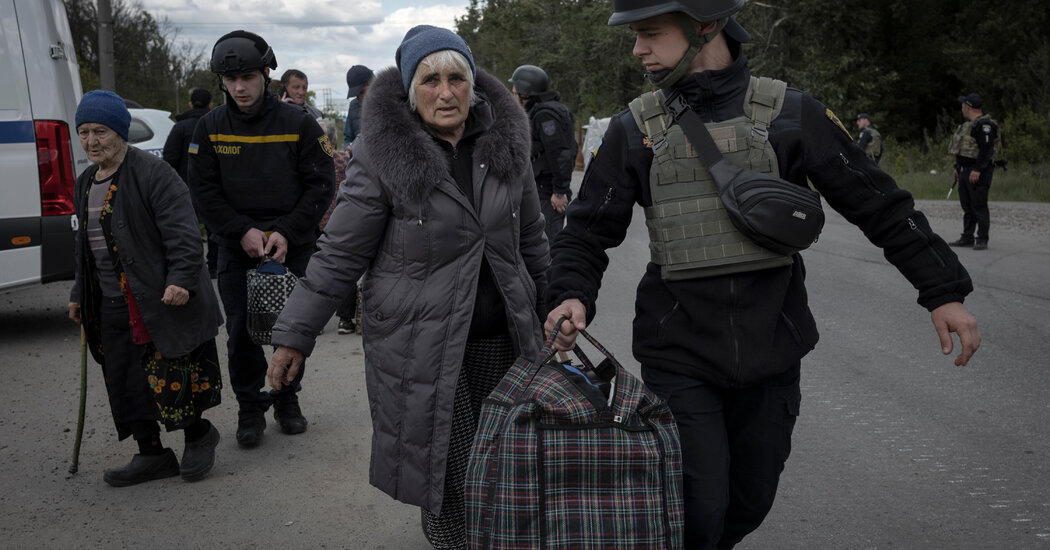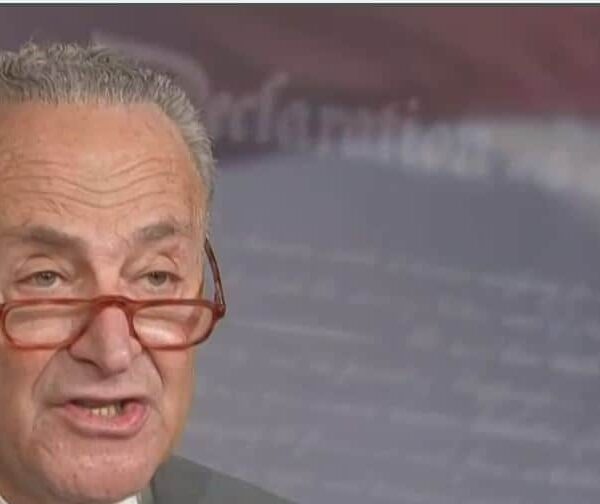Ukraine’s military is confronting a “critical” situation in the country’s northeast, facing troop shortages as it tries to repel a Russian offensive that has been advancing for several days, a top Ukrainian general said on Monday.
Russian troops surged across the border last week to open a new line of attack near Kharkiv, Ukraine’s second-largest city after Kyiv, capturing at least nine settlements and villages and forcing thousands of civilians to flee.
“The situation is on the edge,” Gen. Kyrylo Budanov, the head of Ukraine’s military intelligence agency, said in a video call from a bunker in Kharkiv. “Every hour this situation moves toward critical.”
His bleak assessment echoed those of other Ukrainian officers in recent days, that the country’s military prospects were dimming. In addition to being outnumbered, the Ukrainians face critical shortages of weapons, especially artillery ammunition, and $60.8 billion worth of arms from the United States — approved three weeks ago after months of congressional gridlock — has barely begun to arrive.
Like most Ukrainian officials and military experts, General Budanov said he believes the Russian attacks in the northeast are intended to stretch Ukraine’s already thin reserves of soldiers and divert them from fighting elsewhere.
That is exactly what is happening now, he acknowledged. He said the Ukrainian army was trying to redirect troops from other front line areas to shore up its defenses in the northeast, but that it had been difficult to find the personnel.
“All of our forces are either here or in Chasiv Yar,” he said, referring to a Ukrainian stronghold about 120 miles farther south that Russian troops have assaulted in recent weeks. “I’ve used everything we have. Unfortunately, we don’t have anyone else in the reserves.”
General Budanov assessed that Ukrainian forces would be able to shore up their lines and stabilize the front within the next few days. But he expects Russia to launch a new attack further north of Kharkiv, in the Sumy region.
Fighting on Monday was raging on the outskirts of Vovchansk, a small town about five miles from the Ukrainian-Russian border, northeast of Kharkiv. Russian airstrikes were pounding the town, according to Denys Yaroslavsky, a senior lieutenant commanding a unit currently fighting there.
“They’re dropping five to seven bombs every three minutes,” Lieutenant Yaroslavsky said in a phone interview on Monday morning.
Vovchansk had a prewar population of about 17,000 people, and local officials have been struggling to evacuate the estimated 200 to 300 remaining residents. Hryhoriy Shcherban, a volunteer who was in Vovchansk on Monday morning, said that he had received more than 200 requests for evacuation overnight.
“We are driving around trying to find the addresses. Russia is shelling the evacuation road,” he said. “You can hear explosions all the time.”
The advance on Vovchansk followed weeks of warnings from Ukrainian officials that Russia was massing forces on the border with the aim of launching a new offensive in the northeast. Those warnings became a reality early Friday morning when Russian troops streamed across the border along two main lines — one immediately north of Kharkiv and the other about 12 miles to the east, around Vovchansk.
Russian forces have so far managed to push about five miles into Ukrainian territory and seize some 50 square miles of land, according to online maps of the battlefield posted by the Institute for the Study of War, a Washington-based think tank.
“The enemy is currently achieving tactical success,” the General Staff of Ukraine acknowledged in a statement early Monday. It added later in the day that Russian forces had pushed closer to another settlement, Lukyantsi.
In a possible sign of Ukraine’s difficulties on the battlefield, the Ukrainian commander responsible for the northeast front was dismissed and replaced on Monday, according to President Volodymyr Zelensky.
Military experts and Ukrainian officials say that the Russian troops have so far mostly advanced through lightly defended and largely depopulated territory, explaining the relatively quick progress. The border in northeastern Ukraine has been subject to regular Russian shelling throughout the war, they note, which has made it difficult to establish fortified positions and has driven many civilians to flee.
Still, Russian forces are approaching more populated areas, and the fight may increase in intensity. Local authorities have already evacuated close to 6,000 people since Friday, according to Oleh Syniehubov, head of the Kharkiv region’s military administration.
“It’s hell there,” said Tetyana Polyakova, who was evacuated from Vovchansk during the night from Friday to Saturday, describing the relentless shelling of the town. “Believe me I’ve seen everything after living in Vovchansk since the beginning of the war. I saw the shelling. I saw it all, but I have never seen that.”
The front line in the region is moving fast, leaving many settlements in what Ukrainian officials have called the “gray zone” — the contested areas between Ukrainian and Russian positions.
Ukrainian civilians said Monday that fighting had broken out near Lyptsi, a village north of Kharkiv, suggesting that Russian forces may have advanced within 10 miles of the city.
“We were racing out as fast as we could, as we could hear small-arms fire there,” said Krystyna Gavran, 32, catching her breath in Kharkiv after an evacuation mission to Lyptsi. She estimated that fewer than 100 people remained in the village, which had a prewar population of 4,000.
General Budanov said the Russians’ goal in the northeast was to sow panic and confusion in the region. “At the moment, our task is to stabilize the line and then begin to push them back across the border,” he said, adding that an influx of Ukrainian reserves had managed to “partially disrupt their plans.”
Whether these troop movements will weaken Ukraine’s defenses in other parts of the front line remains to be seen.
Russia’s main objective, according to Franz-Stefan Gady, a Vienna-based military analyst, is to draw forces away from Chasiv Yar, a town on strategic high ground where Ukrainians have fought for weeks to hold off a Russian attack. It is key to defending the Ukrainian-controlled part of the southeastern Donbas region, which Russia hopes to capture.
Pasi Paroinen, an analyst from the Black Bird Group, a Finland-based organization that analyzes satellite imagery and social media content from the battlefield, said Ukraine had sent reinforcements to the northeast drawn from units that had recently been fighting in Chasiv Yar, such as the 92nd Assault Brigade.
But Mr. Paroinen noted that it was possible that Ukraine had drawn from elements of the brigade that were resting in Kharkiv, their home garrison, rather than depleting the defenses of Chasiv Yar.
Military analysts say that Russia has yet to commit large numbers of troops to the offensive — probably deploying just a few thousand soldiers — and that much would depend on Moscow’s next move.
With fighting heating up in the region, cross-border fire is likely to intensify. Russian authorities said on Monday that Ukrainian shelling had killed 19 civilians in the Belgorod region of Russia, across the border from Kharkiv.
In one particularly deadly episode, the Russian Defense Ministry said fragments from an intercepted Ukrainian missile had struck an apartment building in the region on Sunday. Vyacheslav Gladkov, the Belgorod governor, said that 15 bodies had been found in the rubble. The claims could not be independently verified; Ukrainian officials denied firing on residential areas.
General Budanov said he expected the attacks in the Kharkiv region to last another three or four days, after which Russian forces are expected to make a hard push in the direction of Sumy, a city about 90 miles to the northwest of Kharkiv. Ukrainian officials have previously said that Russia had massed troops across the border from Sumy.
Pavlo Velycho, a Ukrainian officer operating near the Russian border in the Sumy region, said that Russian shelling of the outskirts of Sumy had recently increased.
“I have no idea if it means anything because those places were often shelled anyway,” Mr. Velycho said. “In any case we are in full combat readiness.”
Emile Ducke contributed reporting from Kharkiv















